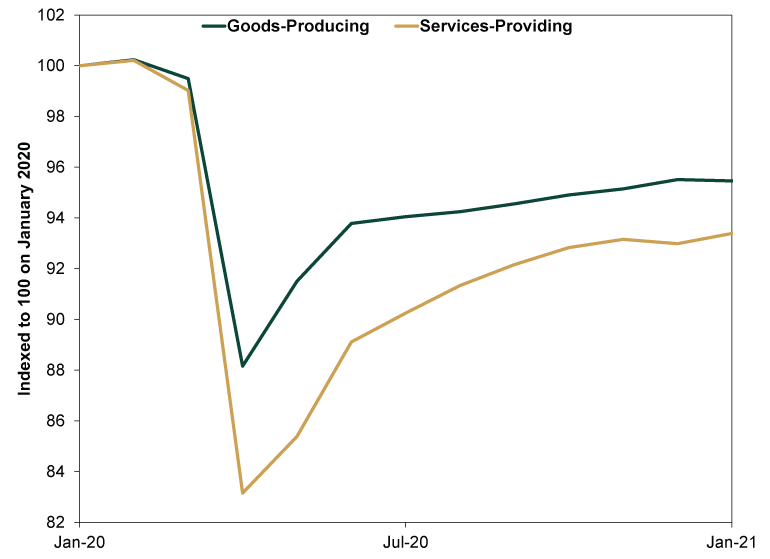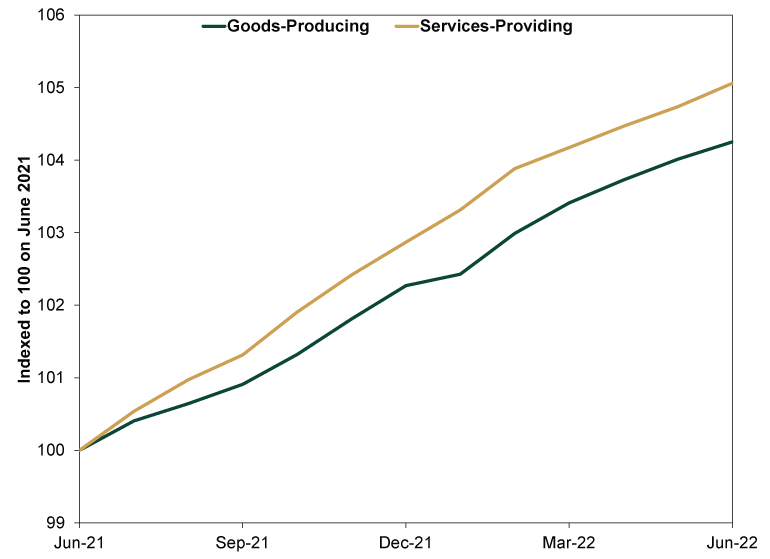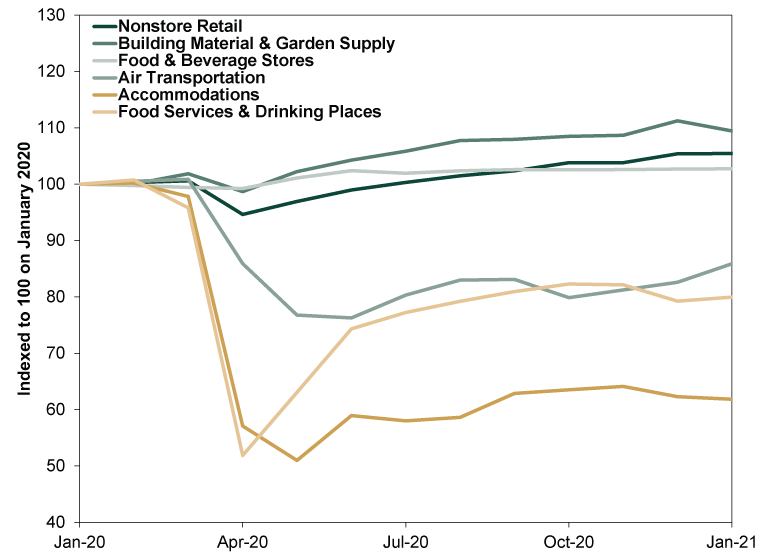Personal Wealth Management / Economics
What June Jobs Say About the US Economy
More signs the economy is returning to normal.
The June jobs report came out last Friday, and most analysis covered a well-tread topic: How will the latest employment data influence the Fed? Speculating about this isn’t helpful for investors, as central bankers’ actions aren’t predictable, in our view. However, we think digging deeper into the jobs numbers sheds light on another development: Pandemic dislocations continue evening out, a sign the return toward normal is ongoing—a small, but overlooked, positive, in our view.
The most widely watched jobs measures didn’t deviate much from their recent trends in June. Nonfarm payrolls rose 372,000, more or less in line with the average monthly gain of 383,000 over the past 3 months, while the unemployment rate registered its fourth straight month at 3.6%.[i] The labor force participation rate ticked down from May’s 62.3% to 62.2% as the numerator—the labor force (the sum of employed and unemployed persons)—fell by 353,000. A decline in the number of employed government workers underpinned the drop—the number of employed private-sector workers actually rose in June.
While the headline figures didn’t reveal much new insight, we found some interesting nuggets that run against recent popular headline themes. For example, many have worried about hiring freezes and layoffs among some (particularly small) Tech firms and startups—and the potential implications for the broader sector. However, jobs in the “computer systems design & related services” field rose by 10,000 in June, and the industry hasn’t suffered monthly net job losses on a seasonally adjusted basis since July 2020.[ii] Now, the Bureau of Labor Statistics has acknowledged the pandemic’s challenges to its seasonal adjustment methodology, especially in 2020 data, though the agency’s adjustments may have mitigated COVID’s effects.[iii] We also don’t dismiss the fact some Tech firms are laying people off or letting their headcount shrink through attrition. But in our view, they aren’t exactly of a huge magnitude at this point from a macroeconomic perspective. This could well be a case of hard data telling a different story than headline anecdotes—and why it is important to consider both, not just one or the other in isolation.
June’s jobs report also added more evidence of a broader development: The economy appears to be returning to its pre-pandemic trends as COVID dislocations continue evening out. For example, when the first lockdowns struck in early 2020, goods-producing industries held up better—and recovered more quickly—than services-providing industries. (Exhibit 1) This wasn’t surprising since COVID restrictions hit people-facing businesses much harder than manufacturing, and the latter were largely allowed to resume operating with fewer interruptions after the initial stoppages.
Exhibit 1: Hiring Diverged Between Goods Producers and Services Providers in 2020

Source: FactSet, as of 7/11/2022. Employees on nonfarm payrolls for goods-producing and private service-providing sectors, thousands of persons, January 2020 – January 2021. Indexed to 100 on January 2020.
But in recent months, as COVID restrictions eased, hiring in services outpaced hiring in goods-producing industries. In our view, that suggests demand for services has returned, and businesses are responding accordingly. (Exhibit 2)
Exhibit 2: The Divergence Has Flipped

Source: FactSet, as of 7/11/2022. Employees on nonfarm payrolls for goods-producing and private service-providing sectors, thousands of persons, June 2021 – June 2022. Indexed to 100 on June 2021.
We can see the pandemic’s evolving impact on jobs trends within the services sector. In 2020, COVID restrictions decimated hiring in certain industries. The inability to travel roiled the air transportation and accommodations industries while social-distancing rules prevented consumers from patronizing their favorite food and drink places. However, jobs among certain retailers held up relatively well. With many Americans stuck at home, demand was strong for non-store retailers, food and beverage stores and building material & garden supply shops—and hiring growth reflected that. (Exhibit 3)
Exhibit 3: The Pandemic’s Impact on Hiring in Select Services Industries in 2020

Source: FactSet, as of 7/11/2022. Employees on nonfarm payrolls for select services industries, thousands of persons, January 2020 – June 2021. Indexed to 100 on January 2020.
But as COVID restrictions have relaxed and society makes its way back to normal, hiring in COVID-impacted industries has picked up considerably. (Exhibit 4)
Exhibit 4: The Pandemic’s Impact on Hiring in Select Services Industries Over Past 12 Months

Source: FactSet, as of 7/11/2022. Employees on nonfarm payrolls for select services industries, thousands of persons, June 2021 – June 2022. Indexed to 100 on June 2021.
Now, we don’t expect hiring in COVID-impacted industries to continue at the same rapid pace in perpetuity, as it likely reflects pent-up demand for certain businesses. But in our view, the numbers are the latest signs the economy is returning to its pre-pandemic growth trends.
June’s findings are consistent with what we have seen in other recent growthy US economic data. But as always, we caution investors against using jobs as a sign of things to come: Labor data are lagging indicators. Since they follow economic growth, today’s job gains aren’t evidence against a GDP contraction or recession.
However, June’s jobs growth signals some high-profile, long-running pressures have been easing, allowing demand to return—and businesses have been responding in kind. It may be difficult to appreciate this small positive given headlines’ focus on the negatives, but it is another sign reality isn’t as poor as many think—queuing up positive upside surprise.
[i] Source: US Bureau of Labor Statistics, as of 7/8/2022.
[ii] “Computer Systems Design and Related Services” includes roles ranging from software developers and computer support specialists to sales and administrators, so the jobs covered here are broad.
[iii] “The Challenges of Seasonal Adjustment for the Current Employment Statistics Survey During the COVID-19 Pandemic,” Nicole Hudson, Jeannine Mercurio, and Jurgen Kropf, Bureau of Labor Statistics, May 2022.
If you would like to contact the editors responsible for this article, please message MarketMinder directly.
*The content contained in this article represents only the opinions and viewpoints of the Fisher Investments editorial staff.
Get a weekly roundup of our market insights
Sign up for our weekly e-mail newsletter.

You Imagine Your Future. We Help You Get There.
Are you ready to start your journey to a better financial future?

Where Might the Market Go Next?
Confidently tackle the market’s ups and downs with independent research and analysis that tells you where we think stocks are headed—and why.





